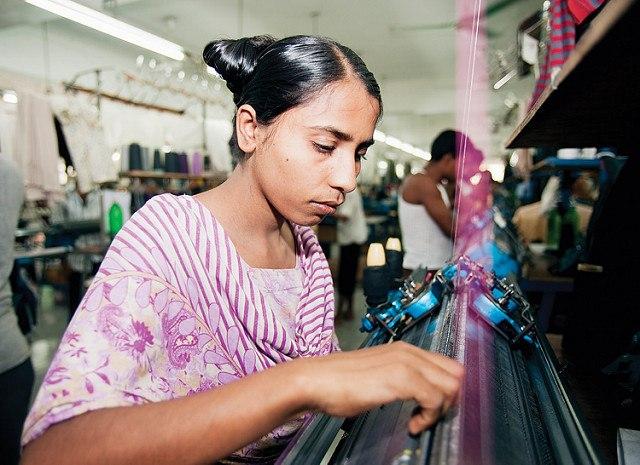
The garment industry has a massive impact throughout the developing countries that have become integral to its supply chain. And usually not in a good way.
For example, it took the 2013 Rana Plaza factory collapse for the global garment industry to take action in order to increase workers’ rights in Bangladesh. Meanwhile, Cambodia, home to many clothing companies’ suppliers, has seen its garment industry become its largest export sector over the past generation.
But Cambodian workers do not necessarily reap the economic benefits from the country’s growing garment trade. Relations between workers, factory owners and the government have long been volatile. And conditions are not getting better, according to a documentary that highlights the daily struggles of garment workers in Cambodia and other developing countries where employment options are limited.
The 32-minute film, "Living Wage Now," which was produced by the NGO Asia Floor Wage Alliance (AFWA), takes a harsh view of the substandard conditions in which many garment workers toil throughout South and Southeast Asia. Long hours and uncomfortably stuffy shop floor environments are exacerbated by physical violence, sexual harassment, the denial of meal or bathroom breaks and, in the worst cases, death. One Cambodian worker interviewed by the film crew said her $160 monthly salary is usually not enough to make end’s meet. From other workers’ points of view, she is one of the lucky ones — many make even less.
Despite the poor conditions, low wages, and overall deplorable human rights violations that AFWA and other labor rights groups documented extensively, workers in Cambodia have had a hellish time persuading the government to stand up for the rights. The central government has been in dire financial straights for years. And from its point of view, it has no interest in risking a lucrative industry departing its shores for even cheaper markets (for example, Myanmar and some African nations).
The result is years of tension and frequent violence between Cambodia’s estimated 700,000 garment workers and the Phnom Penh government. Strikes have long been in the norm in Cambodia, especially after the garment industry picked up steam again after the 2008-2009 global financial meltdown.
But despite the constant back-and-forth of strikes and the government agreeing to raise wages, most garment workers still live on only a few dollars a day. At the same time, prices for everything from food to schooling continue to increase across Cambodia. In recent years, the clashes have become more violent as chanting and rock-throwing were returned by gunfire from police.
The protests didn't die down, however. And the government finally had enough. Last summer, the Cambodia’s parliament passed a trade union law that made it more difficult for workers to organize. It also strengthened the government’s right to punish and even liquidate unions that collaborated with groups judged to have planned “economic sabotage” or engaged in activities that would “threaten” the government’s security.
While that law was written vaguely, another law tightening regulations on NGOs was quite clear: NGOs and their employees can be subjected to jail, fines, expulsion and even property confiscation if their actions are viewed as threatening the state — or in other words, aligning with Cambodian labor activists. As The Economist reported, such tactics are a way to keep civil unrest at bay until the next parliamentary elections in 2018.
The global garment industry says it is aggressively tackling the problems festering in the factories that churn out fast fashion and high-end clothing. But as "Living Wage Now" suggests, many workers still don't benefit from these reforms. The focus on Bangladesh is noble, but Cambodian workers also deserve better wages and working conditions so another Rana Plaza does not occur in Southeast Asia.
Image credit: Flickr/Bread for the World

Leon Kaye has written for 3p since 2010 and become executive editor in 2018. His previous work includes writing for the Guardian as well as other online and print publications. In addition, he's worked in sales executive roles within technology and financial research companies, as well as for a public relations firm, for which he consulted with one of the globe’s leading sustainability initiatives. Currently living in Central California, he’s traveled to 70-plus countries and has lived and worked in South Korea, the United Arab Emirates and Uruguay.
Leon’s an alum of Fresno State, the University of Maryland, Baltimore County and the University of Southern California's Marshall Business School. He enjoys traveling abroad as well as exploring California’s Central Coast and the Sierra Nevadas.














